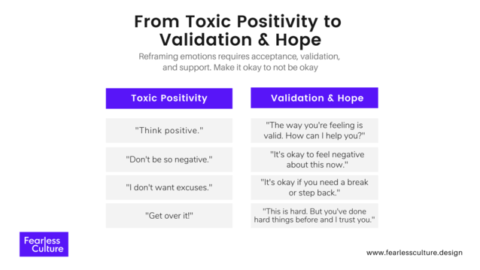Today’s extreme social and political polarization.
I began writing my final book during the pandemic year. It was a comprehensive, major work on Creative Systems Theory. As I was nearing the end of the book, a dynamic began to emerge that would define social discourse. It is this dynamic that has driven me to write again.
The conflict between ideologies has become severe that it is almost impossible to have a real conversation on many subjects. Extreme polarization can cause conflict between neighbors, causing a distraction that prevents us from addressing important questions and sometimes putting our lives at risk. We are seeing a troubling form of double polarization. Not just extreme polarization among left and right political parties, but also populist anti-authoritarian thoughts on both the left or the right. It is a polarization that exists between the above and the below. This polarization is becoming more prominent and more vocalized.
This should be a concern. It is making it difficult to achieve the type of “growing up” that Creative Systems Theory focuses on with the concept of cultural maturity in high relief. In response, I wrote the book Guidance and Perspective for a Time of Deep Discord.
The current circumstances call for a critical recognition of the need to get beyond today’s knee-jerk reactions to polar animosities, and how cultural maturity might offer an antidote. This is the central theme of the book. It is not about what we think but how we think. It is ultimately about something deeper than beliefs and values. People refer to it with terms like worldview, which brings us closer. The most fundamental aspect of ideology is psychological patterns or, more specifically, patterns in the cognitive organization. It’s not that belief causes polarization; it is that polarity plays a role in shaping our thoughts and creating polarized beliefs.
This is not surprising for a psychiatrist. When working with individuals, I tend to listen less to their specific words and more to the psychological implications. I try to understand “where they are coming from”. I am interested in the psychological/cognitive patterns that create a person’s beliefs. As a cultural psychiatrist, it is natural to listen in the same way.
It is possible to be surprised that the notion of social/political Polarization has more in common with our cognitive mechanisms than the actual complexity of policy. Our opinions are often viewed as rationally arrived at conclusions. The media tends not to accept that what someone says is necessarily what he or she meant. Recognizing that there are underlying cognitive patterns is crucial. This is crucial to understand why it can be so hard to get beyond polarization and why civil discourse often fails. It is crucial to understand what the future holds if cultural maturity is true.
Cognitive dynamics is not the only thing beliefs are about. Reasoned consideration can help us to understand the details of our beliefs. Beliefs can be affected by many external factors, such as where we live (urban versus rural), our family, and the unique challenges that life presents. However, belief can quickly become a psychological pattern. These patterns can be referred to as “ecological niches” within our psyches. Different social narratives will fit into different cognitive niches.
Multiple pieces of evidence support the conclusion that ideology has less to do with how we think than what we think. The common intractableness and diversity of opinions are what make the best ideas. It is easy to believe that people who have different views from ours should be treated with respect and engage in debate. Debate rarely changes people’s minds. As a result, positions become more established.
Evidence also shows that issues that become highly polarized in the end are not often viewed in partisan terms when first brought to public attention. This was true for both climate change reform and health care reform. When the evidence was first revealed, there were no obvious sides to climate change. The original model for Obamacare was Republican Mitt Romney’s plan from Massachusetts. Similar surprises are often encountered on the international stage with us-versus–them antagonisms. As we often assume, wars are not always the result of major differences. Consider how World War I started with the assassination of Archduke Franz Ferdinand, Austro-Hungarian heir. It was an important event, but few knew it would have such profound consequences.
The common closeness of elections provides us with another important piece of evidence. We would find general agreement on which candidate is most qualified if voting was based on the candidate’s perceived intelligence, more often than we do. Elections are won most often by a small percentage point or less. If we’re dealing with cognitive patterns that are oppositely polarized, this is what we’d expect. Polarities can be pushed to the extremes and split 50-50 like two sides of one coin. If you don’t have the qualifications to run for office, creating controversy and polarization is one of the best ways to win. You should be able to win at least 50% of the vote, as opposites are likely to split evenly. (Unless polarization is involved, we would expect to find the split that matches the number of people who reach each conclusion.
Evidence is also found in the almost opposite relationship between the level of knowledge and the likelihood that a person will hold strong opinions. We would expect that surety is a function of how well topics have been studied. In reality, however, the most strident and long-winded opinions and lengthy statements are often from people who don’t know much and have little to contribute to real conversations. Cognitive patterns are more compatible with less frequent information. Increased information can lead to internal dissonance.
It turns out that if we have enough nuanced conceptual tools we can predict the ideologies we will encounter by deconstructing psychological patterns and structures. This is how I use the Creative Systems Theory Personality Typology. This allows us to predict the underlying values and narratives of people, rather than specific issues. However, this type of observation can be extremely useful. It helps to make sense of confusing results, such as people having views that are not in their best interests or strange-bedded alliances. It helps us to appreciate the more comprehensive understanding that comes from a culturally mature systemic perspective and what it requires.
Perspective and Guidance in a Time of Deep Discord explains the cognitive mechanisms behind polarization. I also discuss the systemic understanding required to overcome it. A variety of issues are causing polarization in today’s world, including climate change, abortion, gender relations, immigration, and race and gender relations. One simple observation is enough to guide my approach. “In past times, when we faced polarized positions or partisan advocacy, our task seemed obvious and unquestioned. We believed there were only two choices and our task was to choose the right one and fight for it.
Polarization can have very different consequences as we look into the future. This alerts us that we have not yet asked the difficult questions that eventually need to be answered. We see there are always more than two sides to the story when we ask larger questions. Each traditional side may have a piece, but neither one side nor averaging of different positions can take us to the right place. To move forward effectively, we must have greater maturity and a wider perspective on how we understand our worlds and make decisions.
Each topic is explained in detail. I explain how if we can identify the more complex, systemic questions and then take on that challenge, it opens up new perspectives. The results can be simple if we are willing to take on the challenge. In the end, it may seem like common sense. Cultural maturity is the concept that a new, more complete form of common sense will be necessary to create the future we want.
Charles Johnston M.D.








